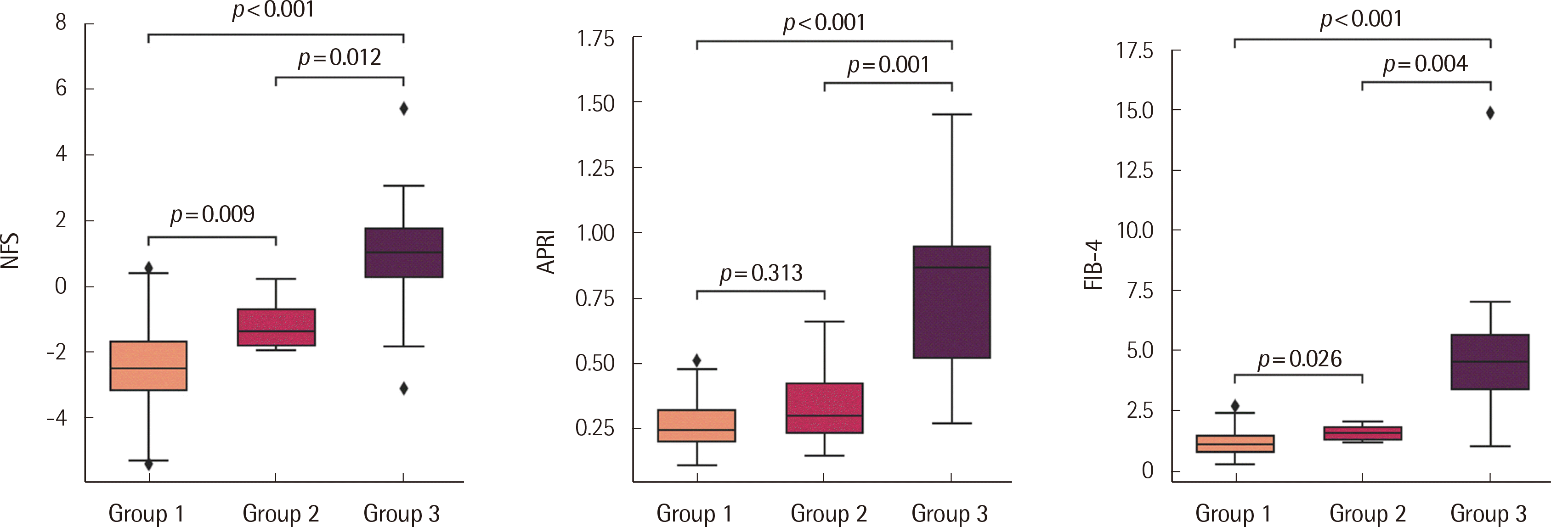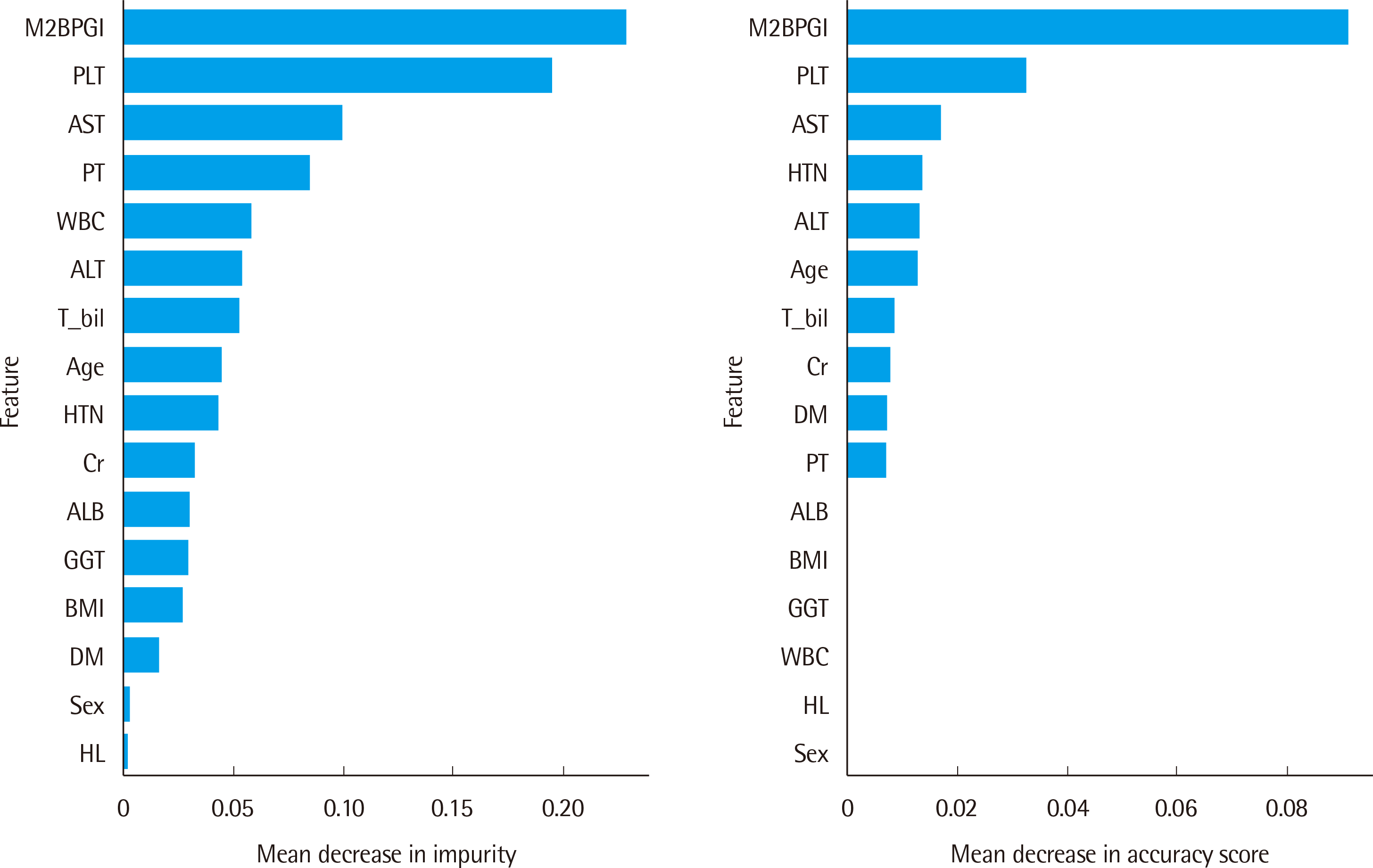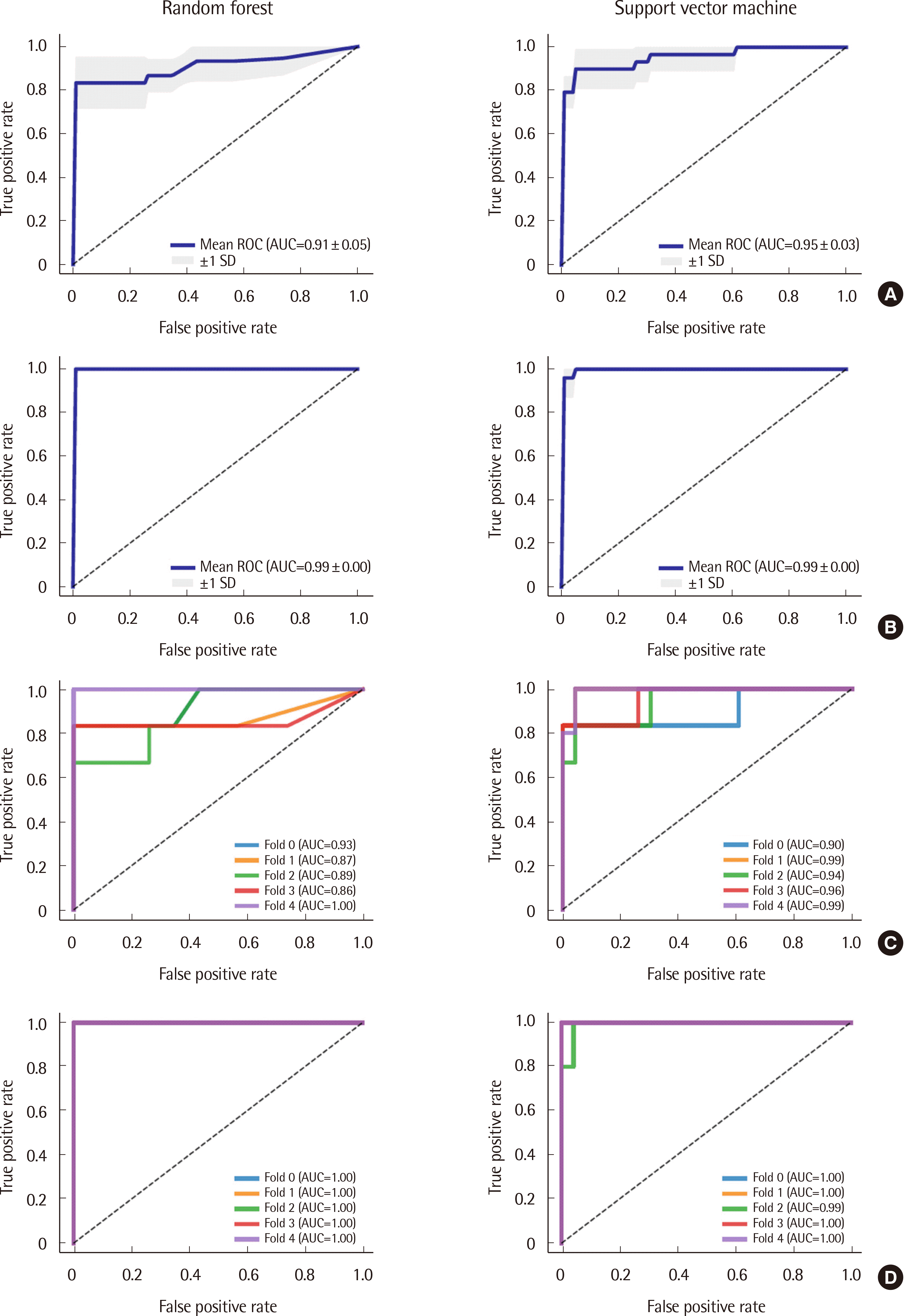1. Campana L, Esser H, Huch M, Forbes S. 2021; Liver regeneration and inflammation: from fundamental science to clinical applications. Nat Rev Mol Cell Biol. 22:608–24. DOI:
10.1038/s41580-021-00373-7. PMID:
34079104.
2. Rockey DC, Bell PD, Hill JA. 2015; Fibrosis - a common pathway to organ injury and failure. N Engl J Med. 372:1138–49. DOI:
10.1056/NEJMra1300575. PMID:
25785971.
3. Pellicoro A, Ramachandran P, Iredale JP, Fallowfield JA. 2014; Liver fibrosis and repair: immune regulation of wound healing in a solid organ. Nat Rev Immunol. 14:181–94. DOI:
10.1038/nri3623. PMID:
24566915.
4. Kim BK, Fun J, Yuen MF, Kim SU. 2013; Clinical application of liver stiffness measurement using transient elastography in chronic liver disease from longitudinal perspectives. World J Gastroenterol. 19:1890–900. DOI:
10.3748/wjg.v19.i12.1890. PMID:
23569334. PMCID:
PMC3613104.
6. Fallatah HI, Akbar HO, Fallatah AM. 2016; Fibroscan compared to FIB-4, APRI, and AST/ALT ratio for assessment of liver fibrosis in Saudi patients with nonalcoholic fatty liver disease. Hepat Mon. 16:e38346. DOI:
10.5812/hepatmon.38346. PMID:
27642348. PMCID:
PMC5018361.
7. Amernia B, Moosavy SH, Banookh F, Zoghi G. 2021; FIB-4, APRI, and AST/ALT ratio compared to FibroScan for the assessment of hepatic fibrosis in patients with non-alcoholic fatty liver disease in Bandar Abbas, Iran. BMC Gastroenterol. 21:453. DOI:
10.1186/s12876-021-02038-3. PMID:
34861841. PMCID:
PMC8642865.
8. Moon HW, Park M, Hur M, Kim H, Choe WH, Yun YM. 2018; Usefulness of enhanced liver fibrosis, glycosylation isomer of Mac-2 binding protein, galectin-3, and soluble suppression of tumorigenicity 2 for assessing liver fibrosis in chronic liver diseases. Ann Lab Med. 38:331–7. DOI:
10.3343/alm.2018.38.4.331. PMID:
29611383. PMCID:
PMC5895862.
9. Shirabe K, Bekki Y, Gantumur D, Araki K, Ishii N, Kuno A, et al. 2018; Mac-2 binding protein glycan isomer (M2BPGi) is a new serum biomarker for assessing liver fibrosis: more than a biomarker of liver fibrosis. J Gastroenterol. 53:819–26. DOI:
10.1007/s00535-017-1425-z. PMID:
29318378.
10. Saleh SA, Salama MM, Alhusseini MM, Mohamed GA. 2020; M2BPGi for assessing liver fibrosis in patients with hepatitis C treated with direct-acting antivirals. World J Gastroenterol. 26:2864–76. DOI:
10.3748/wjg.v26.i21.2864. PMID:
32550761. PMCID:
PMC7284180.
11. Mak LY, Wong DK, Cheung KS, Hui RW, Liu F, Fung J, et al. 2022; Role of serum M2BPGi levels in predicting persistence of advanced fibrosis in chronic hepatitis B virus infection. Dig Dis Sci. 67:5127–36. DOI:
10.1007/s10620-022-07429-4. PMID:
35258755.
12. Choi R, Oh Y, Lee S, Lee SG. 2019; Evaluation of the serum Mac-2 binding protein glycosylation isomer test used for diagnosis and monitoring of liver fibrosis and the correlation of Mac-2 binding protein glycosylation isomer with hemoglobin A1c. Clin Lab. 65:197. DOI:
10.7754/Clin.Lab.2018.180719.
13. Tsochatzis EA, Gurusamy KS, Ntaoula S, Cholongitas E, Davidson BR, Burroughs AK. 2011; Elastography for the diagnosis of severity of fibrosis in chronic liver disease: a meta-analysis of diagnostic accuracy. J Hepatol. 54:650–9. DOI:
10.1016/j.jhep.2010.07.033. PMID:
21146892.
14. Mikolasevic I, Orlic L, Franjic N, Hauser G, Stimac D, Milic S. 2016; Transient elastography (FibroScan
®) with controlled attenuation parameter in the assessment of liver steatosis and fibrosis in patients with nonalcoholic fatty liver disease - Where do we stand? World J Gastroenterol. 22:7236–51. DOI:
10.3748/wjg.v22.i32.7236. PMID:
27621571. PMCID:
PMC4997649.
15. Festi D, Schiumerini R, Marzi L, Di Biase AR, Mandolesi D, Montrone L, et al. 2013; Review article: the diagnosis of non-alcoholic fatty liver disease - availability and accuracy of non-invasive methods. Aliment Pharmacol Ther. 37:392–400. DOI:
10.1111/apt.12186. PMID:
23278163.
16. Oeda S, Tanaka K, Oshima A, Matsumoto Y, Sueoka E, Takahashi H. 2020; Diagnostic accuracy of FibroScan and factors affecting measurements. Diagnostics (Basel). 10:940. DOI:
10.3390/diagnostics10110940. PMID:
33198092. PMCID:
PMC7696616.
17. Haq AU, Li JP, Saboor A, Khan J, Wali S, Ahmad S, et al. 2021; Detection of breast cancer through clinical data using supervised and unsupervised feature selection techniques. IEEE Access. 9:22090–105. DOI:
10.1109/ACCESS.2021.3055806.
18. Ahmad S, Khan S, Fahad M, Kumar Dutta A, Minh Dang L, Prasad Joshi G, et al. 2022; Deep learning enabled disease diagnosis for secure internet of medical things. Computers, Materials & Continua. 73:965–79. DOI:
10.32604/cmc.2022.025760.
19. Poonguzhali R, Ahmad S, Sivasankar PT, Babu SA, Joshi P, Joshi GP, et al. 2023; Automated brain tumor diagnosis using deep residual U-Net segmentation model. Computers, Materials & Continua. 74:2179–94. DOI:
10.32604/cmc.2023.032816.
20. Decharatanachart P, Chaiteerakij R, Tiyarattanachai T, Treeprasertsuk S. 2021; Application of artificial intelligence in chronic liver diseases: a systematic review and meta-analysis. BMC Gastroenterol. 21:10. DOI:
10.1186/s12876-020-01585-5. PMID:
33407169. PMCID:
PMC7788739.
21. Spann A, Yasodhara A, Kang J, Watt K, Wang B, Goldenberg A, et al. 2020; Applying machine learning in liver disease and transplantation: a comprehensive review. Hepatology. 71:1093–105. DOI:
10.1002/hep.31103. PMID:
31907954.
23. Feng G, Zhang X, Zhang L, Liu WY, Geng S, Yuan HY, et al. Novel urinary protein panels for the non-invasive diagnosis of non-alcoholic fatty liver disease and fibrosis stages. Liver Int. 2023; 43:1234–6. DOI:
10.1111/liv.15565. PMID:
36924436.
24. Alkhouri N. 2017; Putting it all together: noninvasive diagnosis of fibrosis in nonalcoholic fatty liver disease in adults and children. Clin Liver Dis (Hoboken). 9:134–7. DOI:
10.1002/cld.636. PMID:
30992977. PMCID:
PMC6467159.
25. Wei B, Feng S, Chen E, Li D, Wang T, Gou Y, et al. 2018; M2BPGi as a potential diagnostic tool of cirrhosis in Chinese patients with hepatitis B virus infection. J Clin Lab Anal. 32:e22261. DOI:
10.1002/jcla.22261. PMID:
28544156. PMCID:
PMC6817288.
26. Jekarl DW, Choi H, Lee S, Kwon JH, Lee SW, Yu H, et al. 2018; Diagnosis of liver fibrosis with
Wisteria floribunda agglutinin-positive Mac-2 binding protein (WFA-M2BP) among chronic hepatitis B patients. Ann Lab Med. 38:348–54. DOI:
10.3343/alm.2018.38.4.348. PMID:
29611385. PMCID:
PMC5895864.
27. Cross TJ, Calvaruso V, Maimone S, Carey I, Chang TP, Pleguezuelo M, et al. 2010; Prospective comparison of Fibroscan, King's score and liver biopsy for the assessment of cirrhosis in chronic hepatitis C infection. J Viral Hepat. 17:546–54. DOI:
10.1111/j.1365-2893.2009.01210.x. PMID:
19874477.
28. Wong VW, Vergniol J, Wong GL, Foucher J, Chan HL, Le Bail B, et al. 2010; Diagnosis of fibrosis and cirrhosis using liver stiffness measurement in nonalcoholic fatty liver disease. Hepatology. 51:454–62. DOI:
10.1002/hep.23312. PMID:
20101745.
29. Breiman L, Friedman JH, editors. Classification and regression trees-[eBook]. New York: Routledge;2017.
30. Altmann A, Tolosi L, Sander O, Lengauer T. 2010; Permutation importance: a corrected feature importance measure. Bioinformatics. 26:1340–7. DOI:
10.1093/bioinformatics/btq134. PMID:
20385727.
32. Burger CJ. A tutorial on support vector machines for pattern recognition. Data mining and knowledge discovery. 1998; 2:121–67. DOI:
10.1023/A:1009715923555.
33. Hunter JD. 2007; Matplotlib: a 2D graphics environment. Computing in science & engineering. 9:90–5. DOI:
10.1109/MCSE.2007.55.
34. Pedregosa F, Varoquaux G, Gramfort A, Michel V, Thirion B, Grisel O, et al. 2011; Scikit-learn: Machine learning in Python. J Mach Learn Res. 12:2825–30.
35. Nishikawa H, Enomoto H, Iwata Y, Hasegawa K, Nakano C, Takata R, et al. 2016; Impact of serum
Wisteria floribunda agglutinin positive Mac-2-binding protein and serum interferon-gamma-inducible protein-10 in primary biliary cirrhosis. Hepatol Res. 46:575–83. DOI:
10.1111/hepr.12595. PMID:
26418076.
36. Umemura T, Joshita S, Sekiguchi T, Usami Y, Shibata S, Kimura T, et al. 2015; Serum
Wisteria floribunda agglutinin-positive Mac-2-binding protein level predicts liver fibrosis and prognosis in primary biliary cirrhosis. Am J Gastroenterol. 110:857–64. DOI:
10.1038/ajg.2015.118. PMID:
25916223.
37. Yamada N, Sanada Y, Tashiro M, Hirata Y, Okada N, Ihara Y, et al. 2017; Serum Mac-2 binding protein glycosylation isomer predicts grade F4 liver fibrosis in patients with biliary atresia. J Gastroenterol. 52:245–52. DOI:
10.1007/s00535-016-1235-8. PMID:
27349650.
38. Nishikawa H, Enomoto H, Iwata Y, Hasegawa K, Nakano C, Takata R, et al. 2016; Clinical significance of serum
Wisteria floribunda agglutinin positive Mac-2-binding protein level and high-sensitivity C-reactive protein concentration in autoimmune hepatitis. Hepatol Res. 46:613–21. DOI:
10.1111/hepr.12596. PMID:
26406984.
39. Abe M, Miyake T, Kuno A, Imai Y, Sawai Y, Hino K, et al. 2015; Association between
Wisteria floribunda agglutinin-positive Mac-2 binding protein and the fibrosis stage of non-alcoholic fatty liver disease. J Gastroenterol. 50:776–84. DOI:
10.1007/s00535-014-1007-2. PMID:
25326152.
40. Mizuno M, Shima T, Oya H, Mitsumoto Y, Mizuno C, Isoda S, et al. 2017; Classification of patients with non-alcoholic fatty liver disease using rapid immunoassay of serum type IV collagen compared with liver histology and other fibrosis markers. Hepatol Res. 47:216–25. DOI:
10.1111/hepr.12710. PMID:
26997642.
41. Nishikawa H, Enomoto H, Iwata Y, Kishino K, Shimono Y, Hasegawa K, et al. 2016; Clinical significance of serum
Wisteria floribunda agglutinin positive Mac-2-binding protein level in non-alcoholic steatohepatitis. Hepatol Res. 46:1194–202. DOI:
10.1111/hepr.12662. PMID:
26836229.
42. Shigefuku R, Takahashi H, Nakano H, Watanabe T, Matsunaga K, Matsumoto N, et al. 2016; Correlations of hepatic hemodynamics, liver function, and fibrosis markers in nonalcoholic fatty liver disease: Comparison with chronic hepatitis related to hepatitis C virus. Int J Mol Sci. 17:1545. DOI:
10.3390/ijms17091545. PMID:
27649152. PMCID:
PMC5037819.
43. Fujiyoshi M, Kuno A, Gotoh M, Fukai M, Yokoo H, Kamachi H, et al. 2015; Clinicopathological characteristics and diagnostic performance of
Wisteria floribunda agglutinin positive Mac-2-binding protein as a preoperative serum marker of liver fibrosis in hepatocellular carcinoma. J Gastroenterol. 50:1134–44. DOI:
10.1007/s00535-015-1063-2. PMID:
25773774.
44. Toshima T, Shirabe K, Ikegami T, Yoshizumi T, Kuno A, Togayachi A, et al. 2015; A novel serum marker, glycosylated
Wisteria floribunda agglutinin-positive Mac-2 binding protein (WFA(+)-M2BP), for assessing liver fibrosis. J Gastroenterol. 50:76–84. DOI:
10.1007/s00535-014-0946-y. PMID:
24603981.
45. Vapnik VN. 1999; An overview of statistical learning theory. IEEE Trans Neural Netw. 10:988–99. DOI:
10.1109/72.788640. PMID:
18252602.
46. LeCun Y, Bengio Y, Hinton G. 2015; Deep learning. Nature. 521:436–44.
47. Singh S, Fujii LL, Murad MH, Wang Z, Asrani SK, Ehman RL, et al. Liver stiffness is associated with risk of decompensation, liver cancer, and death in patients with chronic liver diseases: a systematic review and meta-analysis. Clin Gastroenterol Hepatol. 2013; 11:1573–84.







 PDF
PDF Citation
Citation Print
Print



 XML Download
XML Download